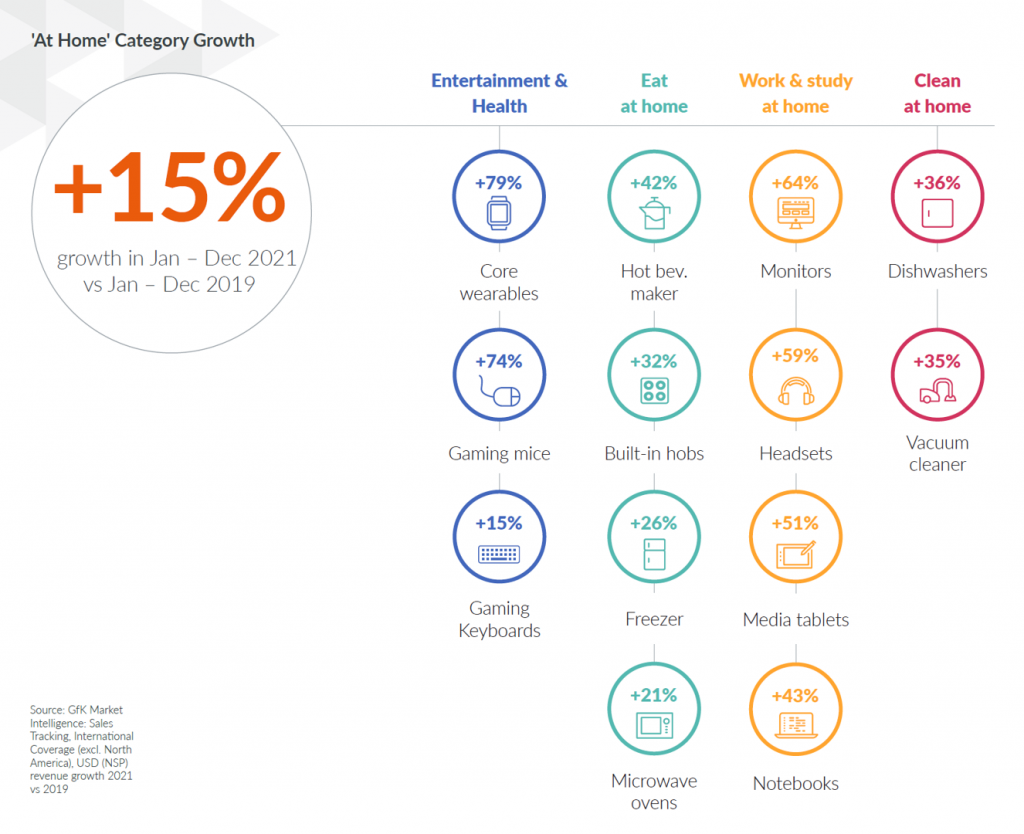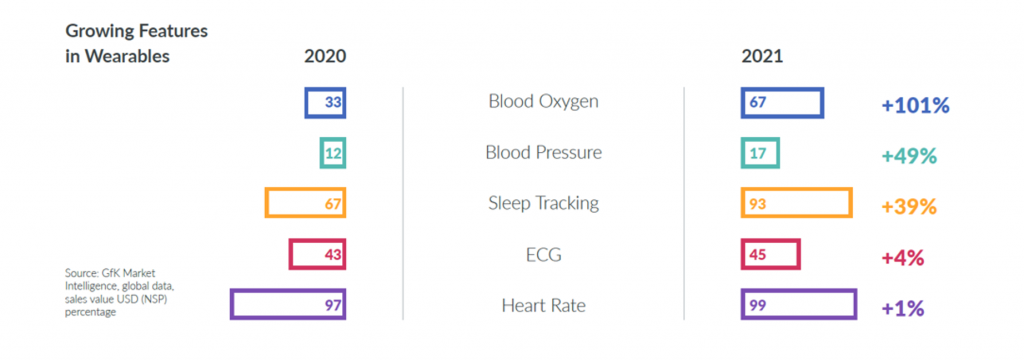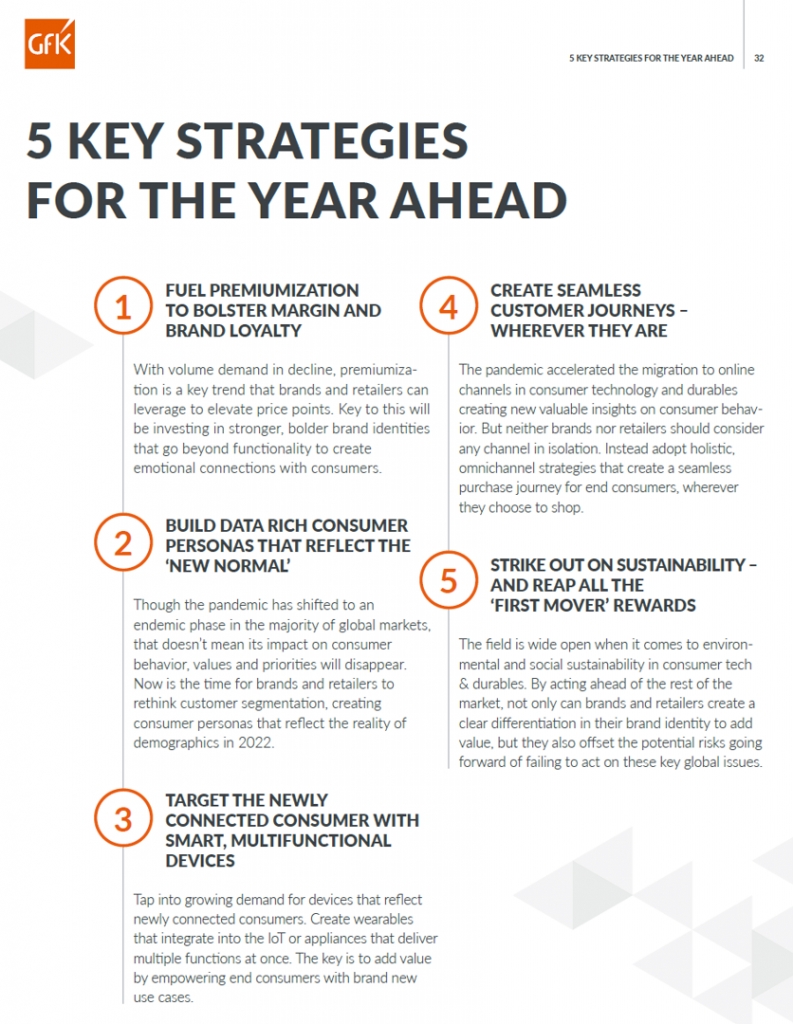[ad_1]
While inflation and financial stress is depressing consumer demand for many purchases the “legacy of COVID-19” is having lost-lasting impacts on how people see their homes — especially as sites for health and wellness.

GfK highlights the growing interest in wellbeing and device demand in The State of Consumer Technology and Durables 2002 insights from GfK.
In 2021, peoples’ spending on technology and durable goods (like home appliances) grew by 15%, with several categories seeing spectacularly high growth rates — most notably entertainment and health, a category in which core wearables purchases were up by 79%. Core wearables include smart watches, which the recent market forecast from the Consumer Technology Association expected would increase in sales in 2022.

A large driver of consumers’ wearable spending demand is directly related to connected/wearable health and to multifunctionality, GfK noted in the research.
Two-thirds of consumers consider staying in good mental and physical shape “extremely important.” “This has created strong demand for tech-enabled devices that equip users with feedback on a raft of health-related metrics, from quality of sleep and number of steps, to blood sugar levels and calories burned,” the GfK report observed.

In 2021, the biggest growth application for consumer health wearable tech was for blood oxygen, growing by over 100% in sales value, with blood pressure growing by 49%, and sleep tracking by 39%.
GfK notes that there is “a lot of space to grow” before every health citizen’s smartphone is connected to a smart watch or fitness tracker (like a Fitbit device). GfK seeks what it terms “secure first mover advantage” for devices that truly create value in consumers’ everyday lives. To accomplish that, the devices will need to be well-designed to be intuitive and accessible.

Health Populi’s Hot Points: “Brands need to consider how they’re fitting into a consumer’s life,” Madalina Carstea, Head of Global Sales, Brand and Marketing Intelligence at GfK recommended in the report. “This means complete integration of tech, lifestyle, behavior and solutions…..to approach all this in a more holistic way.”
Carstea’s advice comports with the five key strategies that GfK calls out for the next year:
- To fuel “premiumization” that enables higher price points that consumers would be willing to pay because products deliver both function and emotional connections
- To be informed by “data-rich consumer personae” that reflect the reality of peoples’ post-COVID demographics
- To target newly connected consumers with multifunctional devices that add value to peoples’ daily life-flows
- To create seamless customer journeys, omni-channel, and
- To double-down on sustainability as first-movers to differentiate and — per the first bullet point, above — bolster emotional connections.
Delivering health care and well-being in the home can be companies’ front door to consumers’ hearts, minds, and wallets. GfK gives us timely guidance in this report to do so. This advice can apply well across the health/care ecosystem, including and beyond technology for food, automotive, and even home appliances.
If you don’t believe this last industry segment is relevant, please see this post I wrote on Whirlpool’s call-to-action for the determinants of health and young students….through the washing machine.
As the company says, #CareCounts.
[ad_2]
Source link



:quality(80))


